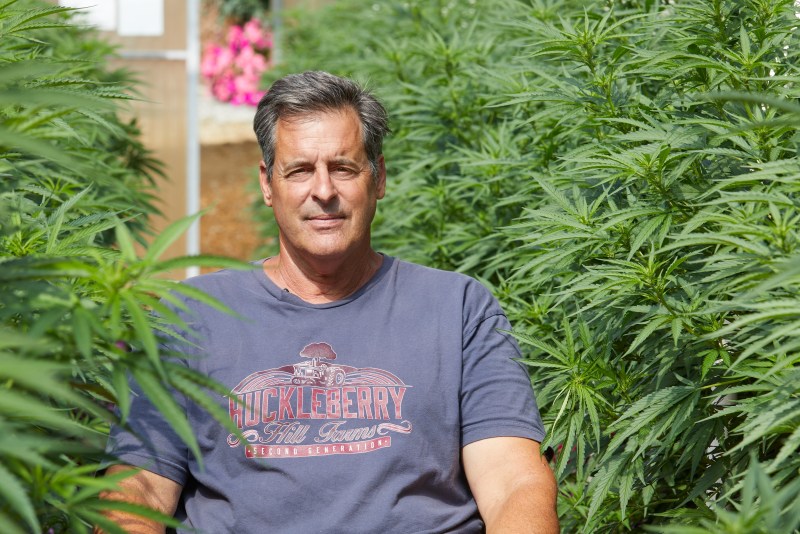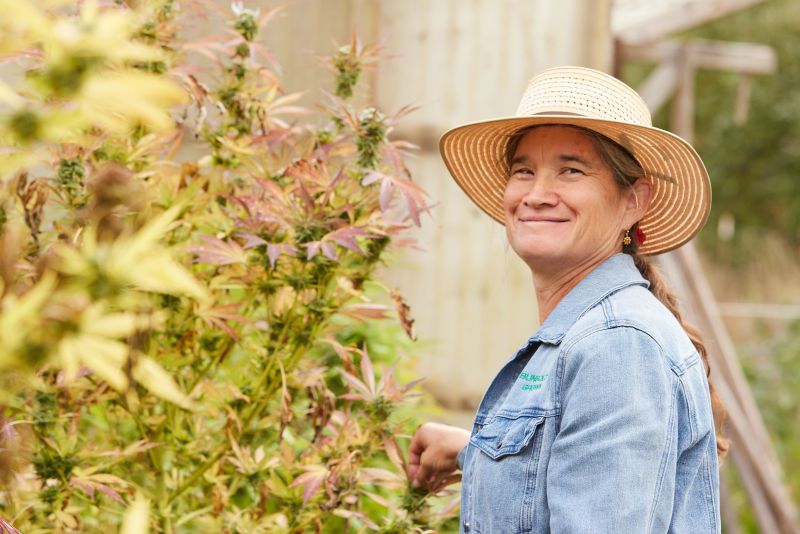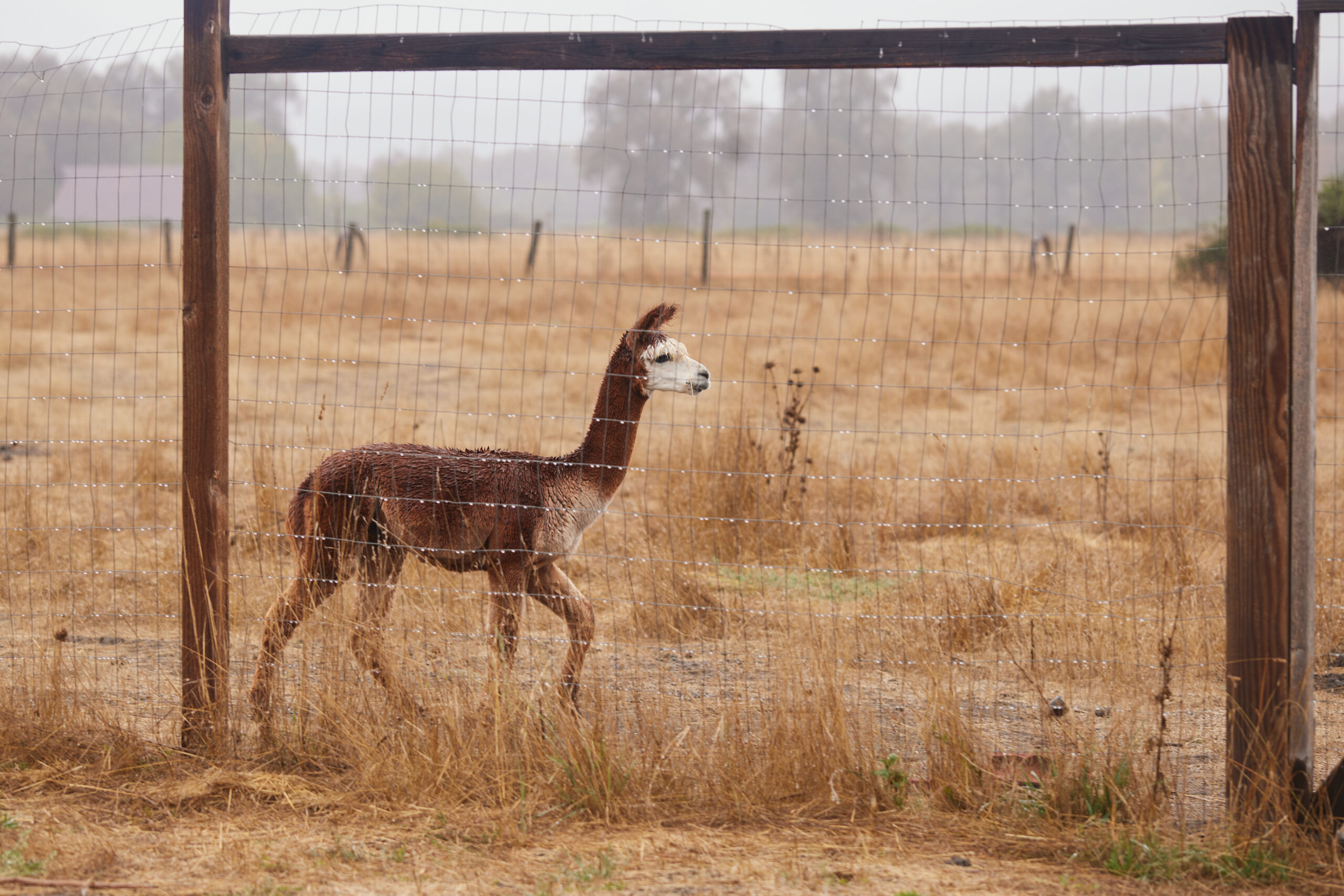Culture & industry
Minnesota has legal weed thanks to these women
Published
2 years agoon
By
admin
Weed officially became legal in Minnesota on August 1, 2023, and it’s now the 23rd state to legalize cannabis for adult use.
And while the majority of Minnesotans had been ready for legal cannabis for some time, achieving legalization in a no-ballot purple state required a consistent and concerted effort from a swath of legislators, stakeholders, and advocates.
Two of these advocates, Leili Fatehi and Laura Monn Ginsburg, worked for four years to bring Minnesota into the modern era of cannabis consumption, executing a big-picture strategy that ultimately helped Democrats secure a political trifecta, ushered in an era of downright legislative hustle, and finally ended cannabis prohibition in the North Star state.
Cannabis advocacy in Minnesota
When Fatehi and Monn Ginsberg came together as legalization advocates in 2019, “no one thought that Minnesota was going to be legalizing anytime in the near future,” said Fatehi.
Minnesota does not allow ballot initiatives, meaning that legalization must come through the legislature. With a divided House and Senate, cannabis legalization was not on anyone’s agenda or radar — even within the Democratic party. “It wasn’t an issue that was on the party platform,” she said, “It was considered a third rail issue that the party didn’t want to touch.”
But having worked in political circles through their public affairs and political consulting firm Apparatus, Fatehi and Monn Ginsberg saw something different. “We were at an election party,” shared Fatehi, “and as I’m looking around, I see senator so-and-so smoking a joint, and there’s a council member, and there’s another prominent political figure.”
Seeing that several politicians felt comfortable consuming cannabis in the open while others were incarcerated for it led to the realization that, while the state had a long tradition of grassroots advocacy, something was missing: a grasstops approach. From there came the creation of the advocacy group Minnesotans for Responsible Marijuana Regulation (MRMR), whose efforts focused on promoting legislative leadership on cannabis legalization.
Working alongside other pro-legalization groups such as Minnesota NORML and Sensible Change for Minnesota, and under the snappy campaign slogan “MN Is Ready,” they got their first big win in 2021 when House Majority Leader Ryan Winkler agreed to take up the issue and gained House approval on the comprehensive legalization bill HF 600 — a first-ever in the state.
“With that win, now [legalization] was definitively a Democratic position,” said Fatehi. “There was political support behind it, and there was a consolidated bill.”
Navigating the House and Senate on the path to legalization
Despite getting HF 600 to pass in Minnesota’s House and making legalization a priority for Democrats, a significant hurdle remained, “We had a divided legislature. Senate Republicans wouldn’t even give this stuff a hearing,” said Fatehi.
A diverse and growing group of policy stakeholders came together under the umbrella of the MN Is Ready coalition, including industry members, labor unions, and community representatives, among others, and set up a political action committee (PAC), turning their focus to the electorate and November 2022 midterm elections.
“We did the kind of work that PACs do in those swing districts, where there were third-party candidates, and we knew they could cost a Democratic seat,” said Fatehi. “It was instrumental towards getting a pro-legalization majority, meaning democratic control in both chambers of the legislature, which no one expected.”
In January 2023, Democrats officially took control of the House and Senate for the first time since 2014, giving the party a political trifecta and an emboldened attitude toward getting things done. The state has now become a powerhouse for progressive legislation, with cannabis legalization as the cherry on top of a long list of accomplishments.
The makings of a cannabis legalization bill
Before cannabis legalization could be passed, a bill had to be written. And given that Democrats had enjoyed only one other trifecta in the last 30 years, the general party ethos had become “LFG” — Let’s F–king Go.
“The last thing you want to do is assume that passing good legislation means that it’s going to lead to good outcomes.”
— Laura Monn Ginsburg
“So then we had to do this last push, which was to build the external infrastructure to help the legislature to be able, in a very short period, to put together a really good bill and pass it,” said Fatehi.
The process may have been relatively quick, but it involved hundreds of hours of working group sessions and public hearings to help legislators put together the policy provisions that went into the bill. “By virtue of having to go through so many committee stops, we had some really thorough conversations,” said Monn Ginsburg, including everything from wastewater runoff to impacts on schools and students. By delving into the finer details, they could craft a piece of legislation that Fatehi and Monn Ginsburg felt was uniquely Minnesotan.
“That’s something I feel was special about the process we went through; we really talked through it,” said Monn Ginsburg. “We had some substantive conversations with twenty-plus committees throughout the Minnesota legislature about every nook and cranny of this bill.”
With minor differences between the House and Senate bills, both passed within the same week this past April. The reconciled bill was officially signed into law on May 30, 2023, by Governor Tim Walz.
Automatic expungement of all prior cannabis possession misdemeanors and petty misdemeanors is underway and will affect nearly 70,000 Minnesotans impacted by the war on drugs. The bill also created a panel to consider the expungement of prior gross misdemeanor and felony cases related to cannabis possession and sales.
Cannabis licensing unique to the Minnesota market
While other state’s cannabis laws helped inform the creation of Minnesota’s, their development came down to creating a collaborative vision for what would make sense for their own state. “We knew we wanted to be craft, we knew we wanted to keep multi-state operators (MSOs) out, and that we wanted it to be equitable,” said Fatehi.
With those guiding principles in mind, hundreds of hours were spent brainstorming different ways to set up the licensing model. “And that is what resulted in this unique model in the bill,” Fatehi explained, “We’re not capping the number of licenses — it’s based on canopy size and designed to create an environment to support local Minnesota businesses.”
One of the ways the bill will help protect the Minnesotan market, at least initially, is through its unique licensing structure. “We spent a lot of time thinking through how these different pieces are going to work together,” said Fatehi.
As it stands, 14 different types of licenses are available to businesses looking to participate in the adult-use and medical cannabis markets, and they can be combined to support various business structures or activities, aiming to provide local businesses with flexibility as the market grows and evolves. For example, a retail license holder can also hold a cannabis delivery service license, a medical cannabis retailer license, and a cannabis event organizer license.
Additionally, communities disproportionately impacted by prohibition will be prioritized for participation in the legal market. Social equity applicants, which may include people who live in low-income communities, have been previously convicted of a cannabis possession or sales offense, and veterans discharged over a cannabis offense, among others, will be given priority in licensing along with grants to help with startup costs and technical training.
Building on the foundations of the current hemp market
The state’s low-dose hemp market fills another uniquely Minnesotan piece to the legalization puzzle. While Fatehi and Monn Ginsburg were busy rallying Democratic support for the midterm elections, in May 2022, Minnesota made a bold and unexpected move that could set the state up for success when legal cannabis finally comes online.
“On the eve of the adult-use market opening up, these businesses are capitalized.”
— Leili Fatehi
Passed as part of an omnibus health care bill, the groundbreaking law — HF 3595 — legalized hemp-derived Delta-8, CBD, and low-dose THC edibles and beverages. And while jokes ensued when local GOP members were confused about the bill’s ramifications, Democrats insisted the intentions were clear.
“It wasn’t an accident. It was very much intentional,” said Fatehi. “When we created that marketplace for hemp-derived THC edible products, it created an opportunity for our local businesses to begin making these products, building out their supply chains, getting their brand out there, building customer loyalty, and developing relationships with local policymakers.”
Minnesota’s low-dose hemp-derived THC market has been booming, with sales in July 2023 reaching nearly $6 million. These products are available in mainstream retail outlets largely prohibited in recreational and medical cannabis markets, such as restaurants and grocery, convenience, and liquor stores.
“On the eve of the adult-use market opening up, these businesses are capitalized; they already have cannabis businesses. They’re competitive, not just in terms of getting a license [for adult use], but for being successful after that. The entire competitive landscape is different, and the consumer expectations are different as well,” said Fatehi.
What’s next for Minnesota’s legal weed market
When cannabis became officially legal in Minnesota on August 1, 2023, Minnesotans were allowed:
- Possession of up to two ounces when out and about
- Up to two pounds per adult at home
- Home growing of up to eight plants
But the state is still a long way off, up to two years by some estimates, from officially launching its retail market.
With the work of legalization behind them, Monn Ginsburg and Fatehi are shifting their focus to supporting the fledgling market “because the last thing you want to do is assume that passing good legislation means that it’s going to lead to good outcomes,” said Monn Ginsburg.
They’ve now launched the Minnesota Cannabis Resource Center (MCRC), which is a public benefit corporation that will operate as a “think/do” tank centered on advancing a safe, equitable, and sustainable industry through its support to legislators, regulators, and industry as the market is developed and launched.
The duo also runs Blunt Strategies, a cannabis-focused public affairs and strategic consultancy whose primary focus is supporting local businesses, ensuring they have the tools, resources, and skill sets they need to thrive.
“We helped pass the law to look this way,” said Fatehi. “It’s both our pleasure and our obligation to now make sure that these businesses are set up for success.”
You may like
-


Cannabis Can Help A Sore Throat
-


Cannabis and the Authoritarian State
-


As cannabis consumer tastes evolve, industry must look beyond potency
-


Article: Early 2025 Empire State Psychedelic Policy Roundup
-


White House Finally Comments On Marijuana Industry
-


Stop Using Bat Poop to Fertilize Your Weed Plants Immediately, Here is Why…
Culture & industry
Huckleberry Hill Farms and the history of the Whitethorn Rose cannabis strain
Published
1 year agoon
March 12, 2024By
admin
In the heart of southern Humboldt lies Huckleberry Hill Farms, a legacy outdoor cannabis grow started by John Casali. Unlike many of the regulated farms that sprouted up in the wake of Prop 64, Huckleberry Hill stood through the war on drugs era, and its story is steeped in passion, struggle, and resilience. It also led to the creation of the award-winning Whitethorn Rose cannabis strain.
 Gina Coleman/Weedmaps
Gina Coleman/WeedmapsIn the late 1960s, Casali, a teenager then, was immersed in the art of cultivation, learning the process from his mother. “[She] was my guiding light. She taught me the tenderness required for plants to thrive,” he shared. But the harsh realities of the war on drugs cast a shadow over their beautiful farm life. “My parents decided to cease cultivation due to escalating law enforcement. They got afraid of the multiple helicopters in the air throughout the year, dropping guys down on wires and eradicating weed.”
“It was all I knew; it was all I wanted to do — cultivate and honor what my mom had taught me.” — John Casali
Casali remained rooted in his passion, but it would eventually lead to his arrest and 10-year prison sentence in 1996. “One morning, I woke up to 30 federal agents coming up my driveway. They held a nine-millimeter to my head, and for the next nine hours, they searched my place. A year and a half after that, they came back with an arrest warrant.”
 Gina Coleman/Weedmaps
Gina Coleman/WeedmapsHis arrest, considered one of the longest federal incarcerations for a non-violent cannabis offense, struck a harsh chord, especially for someone who’d never even received a speeding ticket before. And while serving time in prison, tragedy struck his family. His parents, who had been traveling and fishing for months aboard a commercial albacore boat, encountered a devastating accident, and Casali’s mother tragically passed away. He recalled this period as one of the most challenging phases of his incarceration. “Those years tested my spirit, but the community’s support kept me going.”
Casali was released in 2004, and he found himself in a changed landscape, one where attitudes toward cannabis had massively shifted — no more helicopters over properties. Still driven by his passion for cultivation, he resumed his cannabis journey and even received a symbolically powerful gift from a friend: a preserved plant cut that was used to breed the Whitethorn Rose strain, an honor and testament to him and his mother’s legacy.
 Gina Coleman/Weedmaps
Gina Coleman/WeedmapsThis genetic preservation — maintaining a strain for a decade — embodies an emotional journey where friendship, loyalty, and love for the craft transcend the bounds of time and adversity. Casali created this unique strain by crossing Paradise Punch and Lemon OG.
Paradise Punch had been borne from his mother’s collaboration and was crafted for its early harvesting properties, allowing it to avoid possible mold due to October rains. The Lemon OG was a gift from a friend; combining the two was a convergence of heritage and camaraderie. With time, the strain gained the notoriety it so rightly deserved.
Whitethorn Rose, a strain forged during the war on drugs, now blossoms in a reformed era. It’s a symbol of endurance, community resilience, and triumph.
Moreover, testing by Columbia University in New York revealed the specific complexity of Whitethorn Rose. It boasts over 60 different terpenes and a staggering 444 cannabinoids. One such rare terpene found in this strain is selinadiene, which carries potential therapeutic properties.
Its emergence in the regulated folds of California’s cannabis market is due to its persistence and the unbreakable spirit that defines Huckleberry Hill Farms. Collaborations with Belle, Frenchy’s Cannoli apprentice from Heritage Mendocino, amplified its presence, leading to multiple Emerald Cup wins. This year, over 90% of the farm is devoted to cultivating Whitethorn Rose.
 Gina Coleman/Weedmaps
Gina Coleman/WeedmapsThe journey from cultivating alongside his mother in the late ’60s to overcoming incarceration and emerging stronger, determined to honor his roots, defines John Casali’s personality. Huckleberry Hill Farms is inspirational and deeply rooted in honesty, community, and an unquestionable passion for sun-grown cannabis.
Huckleberry Hills Farms is getting ready to hit California’s market, and you must try the amazing Whitethorn Rose strain. This cultivar has a remarkable history and a uniquely exotic floral flavor, making it a distinctive cultivar worth experiencing.
The post Huckleberry Hill Farms and the history of the Whitethorn Rose cannabis strain appeared first on Weedmaps News.
Culture & industry
Terroir and tradition: growing craft cannabis and the art of dry farming at Sunboldt Grown
Published
1 year agoon
March 3, 2024By
admin
When cruising down the Avenue of the Giants in Humboldt County, one might not realize there’s a hidden gem for cannabis enthusiasts just around the bend. Nestled along the Eel River in the heart of the Emerald Triangle lies Holmes Flat, a picturesque locale surrounded by towering Redwoods. The scenery? Simply breathtaking, drawing visitors in with its lush, fertile ambiance.
There, you’ll find Sunboldt Grown and its founder, Sunshine Cereceda, a local legend with soil under her nails and a heart as expansive as the California sky.
 Gina Coleman/Weedmaps
Gina Coleman/WeedmapsBorn in San Luis Obispo and raised in Humboldt since the age of seven, Cereceda grew up amidst the wilderness near Garberville in a community of activists and artists dedicated to preserving the region’s majestic trees. Tending to a garden since she was knee-high, she credits her mother’s green thumb for instilling in her a deep love for organic cannabis cultivation.
The challenges of craft cannabis in a commercial world
Her journey to becoming an Original Gardener is rooted in her upbringing within Humboldt’s activist community, where she formed deep connections to the land. She sold her first pound of weed at 14 years old in order to finance her education, which led to her developing her expertise through years of hard work and dedication. To this day, Cereceda’s OG status persists.
 Gina Coleman/Weedmaps
Gina Coleman/WeedmapsHowever, the shift from the underground market to the passing of Proposition 215 in 1996 and Proposition 64 in 2016 brought about major changes, turning her world upside down. What was once a dance with law enforcement became a tangled web of legalities and over-regulation. She grappled with the demands, yearning for authenticity amidst the new state of chaos. The transition from medical to adult use felt like a crash course in bureaucracy, leaving her fatigued and longing for the simplicity of yesteryears.
California’s legal landscape poses significant hurdles for craft farmers like Cereceda. Mandatory distribution and the absence of direct sales leave traditional farmers at the mercy of intermediaries, diluting the spirit of their craft.
 Gina Coleman/Weedmaps
Gina Coleman/Weedmaps“The beauty of craft does not sell itself,” she said, “We have a big disadvantage not being able to do direct [cannabis] sales … Compliance demands encroach upon precious time meant for nurturing our crops.” She dreams of a future where small farmers receive the support they need to thrive and where craft is cherished and celebrated in the marketplace.
Dry farming and the return to terroir
One of the characteristics that sets Cereceda apart from other growers is her cultivation techniques. She’s a farmer who doesn’t water her plants — a practice known as “dry farming.” It’s a centuries-old technique that involves cultivating crops without irrigation, relying solely on natural precipitation and soil moisture.
 Gina Coleman/Weedmaps
Gina Coleman/Weedmaps“Dry farming is about embracing the land and its natural rhythms,” she explained, “It’s a minimalist approach that allows terroir to shine through, bringing forth the true essence of the plant.” By eschewing irrigation and adopting low-intervention methods, dry farming conserves water and fosters a deeper connection between the farmer, the land, and the final product. “It isn’t suitable everywhere, but in regions like Humboldt, it’s worth pursuing … We avoid water addiction and enable plants to adapt naturally, resulting in a more resilient crop.”
Along with composting and strategic planting, Cereceda has honed her dry farming skills, growing cannabis that embodies the unique characteristics of Humboldt’s soil and climate.
 Gina Coleman/Weedmaps
Gina Coleman/WeedmapsAs the sun dipped below the horizon, it cast a warm glow over the rolling hills of Holmes Flat, where one thing was abundantly clear: Cereceda’s journey was far from over. From navigating the complexities of legalization to pioneering sustainable cultivation methods, she embodies the spirit of innovation and resilience that defines Humboldt’s cannabis culture.
Her focus on craftsmanship and terroir-driven cultivation is encapsulated in her products, growing craft cannabis that maintains the essence of Humboldt’s fertile soil and pristine climate.
The post Terroir and tradition: growing craft cannabis and the art of dry farming at Sunboldt Grown appeared first on Weedmaps News.
Culture & industry
Organic farming and regenerative agriculture
Published
1 year agoon
February 9, 2024By
admin
In the vibrant yet challenging landscape of California’s cannabis community, Sun Roots Farm is a rare gem situated in Covelo, California. Driving up its winding entrance will lead to a picturesque landscape, unveiling the incredible experience of visiting the farm’s gorgeous gardens. There, you’ll be greeted by towering cannabis plants reaching 12+ feet high and weighing an impressive 10 – 20 pounds each.
Founded by Forrest Gauder and Patricia Vargas, Sun Roots Farm is a testament to the resilience and integrity within the cannabis community.
By embracing a lifestyle around sustainability, they’ve created an enchanting, forest-like atmosphere with their approach, growing massive plants requiring a ladder for proper care. This landscape is common in Mendocino County, and due to dry weather, it makes for the perfect environment for growing colossal cannabis plants.
The founders’ vision of regeneration
Over the past 12 years, Gauder and Vargas have transformed Sun Roots Farm into their permanent residence. With its foundation rooted in regenerative agriculture, the couple not only cultivates cannabis plants but also tends to various vegetables, herbs, fruits, fungi, native medicinal plants, and perennial gardens.
To nourish their garden, they rely on contributions from their animals, with coops full of chickens and fields of alpacas serving as an exemplary model of regenerative agricultural practices. The farm aims to increase biodiversity and introduce closed-loop farming, where farmers recycle all organic material back into the soil and the farm. This system fosters a harmonious coexistence between the land and its inhabitants.
Exclusive seeds and strains
The farm takes pride in its commitment to exclusive seed cultivation, a distinctive approach that sets them apart. Gauder described the process: “We grow all our plants from seed yearly. From the year before, we’ll select pollen and put it on certain plants to make new [strains] — we’ll then collect those seeds. By the middle of February, we’ll crack open the chosen varieties, starting them in a greenhouse … and propagating them until they reach five-gallon pots.”
The decision to grow exclusively from seed is rooted in the farm’s philosophy of embracing genetic variability and maximizing plant vigor. “The reason behind growing from seed … is the genetic variability,” said Vargas. “We grow exclusively from seed. Local breeding has played a pivotal role in shaping plants that are finely adapted to the valley’s conditions, showcasing positive characteristics such as mold resistance, pest resistance, frost resilience, and more.”
Sun Roots Farm’s staple strain is Velvet Purps, bred locally over ten years ago. This strain descends from the valley and is made from various crosses by Gauder’s family and colleagues. Its origin begins with Jah Goo, crossbred with its brother T2 and Magic Bus, giving rise to a cultivar with impressive purple characteristics.
“The plant produces anthocyanins to protect itself, but it’s also purple,” explained Gauder. “You can find anthocyanins and all sorts of fruits and vegetables, too. It’s the pigment, the color. This compound has beneficial aspects when consumed by humans, like antioxidants, and it protects the plant. We had a bad frost a few years ago that destroyed a lot of gardens around here, but all our purple plants were just fine.”
Packed with trichomes and a captivating blend of berry and pine aromas, Velvet Purps luxuriously unfolds on the palate. This unique strain, locally bred and cultivated by Sun Roots Farm and a select few friends only, expresses a distinctive charm. Beyond its sensory delights, it delivers a tranquil and relaxing buzz, making it an ideal choice for evening consumption.
In a market saturated with options, the exclusivity of strains like Velvet Purps emphasizes the farm’s commitment to offering something truly exceptional.
A farm dedicated to sustainable practices
The farm is also Dragonfly Earth Medicine (DEM) certified. “To be DEM is to achieve a certification beyond organic through third-party verification,” explained Vargas, “It’s a community committed to intentional growth and the creation of closed-loop systems.”
Sun Roots Farm maximizes what the land naturally provides, whether it’s blackberry vines for tea or alpaca manure from their animals. “It’s similar to a homesteading lifestyle,” Vargas continued, “incorporating the cultivation of cannabis with an element of integrity into the product.” From closed-loop systems and water conservation to wildlife sanctuaries and companion planting, the farm is a testament to sustainable living techniques.
Vargas also emphasized the importance of observation and mindfulness in their approach, “Take a moment to observe before you go ahead and start harvesting or before you go ahead and start crunching all over the earth.” Gauder added, “As long as we keep stuff covered in the garden, magic always happens. So we’re feeding the bugs, which eat the material on the ground that feeds the plants. It’s a continual cycle of life, rebirth, death, life, rebirth, death.”
The farm extends its commitments beyond the cultivation season. After harvest, they break down plants, mulch with oak leaves, and cover them with hay, creating a winter blanket that transforms into a layer of beautiful topsoil come spring.
At Sun Roots Farm, a calming environment and sustainable living encourage a deeper connection to the products they make and the ones we consume. The farm is a reality where integrity, intention, and regenerative practices converge to create a sanctuary of sustainable cultivation in the heart of California.

Cannabis Can Help A Sore Throat

Cannabis and the Authoritarian State

As cannabis consumer tastes evolve, industry must look beyond potency

Article: Early 2025 Empire State Psychedelic Policy Roundup

White House Finally Comments On Marijuana Industry

Stop Using Bat Poop to Fertilize Your Weed Plants Immediately, Here is Why…

The History Behind April Fool’s Day

Star signs and cannabis strains: April 2025 horoscopes

Does Comfort Food Actually Help

Connect to cannabis history with three legacy strains from Paradise Seeds

Distressed Cannabis Business Takeaways – Canna Law Blog™

United States: Alex Malyshev And Melinda Fellner Discuss The Intersection Of Tax And Cannabis In New Video Series – Part VI: Licensing (Video)

What you Need to Know

Drug Testing for Marijuana – The Joint Blog

NCIA Write About Their Equity Scholarship Program

It has been a wild news week – here’s how CBD and weed can help you relax

Cannabis, alcohol firm SNDL loses CA$372.4 million in 2022

A new April 20 cannabis contest includes a $40,000 purse

Your Go-To Source for Cannabis Logos and Designs

UArizona launches online cannabis compliance online course
Trending
-

 Cannabis News2 years ago
Cannabis News2 years agoDistressed Cannabis Business Takeaways – Canna Law Blog™
-

 One-Hit Wonders2 years ago
One-Hit Wonders2 years agoUnited States: Alex Malyshev And Melinda Fellner Discuss The Intersection Of Tax And Cannabis In New Video Series – Part VI: Licensing (Video)
-

 Cannabis 1012 years ago
Cannabis 1012 years agoWhat you Need to Know
-

 drug testing1 year ago
drug testing1 year agoDrug Testing for Marijuana – The Joint Blog
-

 Education2 years ago
Education2 years agoNCIA Write About Their Equity Scholarship Program
-

 Cannabis2 years ago
Cannabis2 years agoIt has been a wild news week – here’s how CBD and weed can help you relax
-

 Marijuana Business Daily2 years ago
Marijuana Business Daily2 years agoCannabis, alcohol firm SNDL loses CA$372.4 million in 2022
-

 California2 years ago
California2 years agoA new April 20 cannabis contest includes a $40,000 purse



